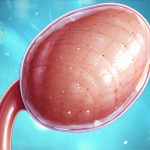Antibiotics have revolutionized modern medicine, saving countless lives by combating bacterial infections. However, for a significant portion of the population – estimated between 10-20% experiencing allergic reactions ranging from mild to severe – relying on these crucial drugs isn’t an option. An antibiotic allergy can manifest in various ways, from harmless rashes and hives to life-threatening anaphylaxis. This creates a challenging situation when illness strikes, necessitating exploration of alternative strategies for managing bacterial infections and bolstering the immune system. Understanding the nuances of antibiotic allergies is paramount, as many reactions are misdiagnosed, leading individuals to unnecessarily avoid effective treatments.
The fear surrounding antibiotic allergies often stems from past experiences or misinformation. It’s important to distinguish between a true allergy – involving an immune response – and side effects like nausea or diarrhea, which are more common and less serious. A true allergic reaction triggers the release of histamine and other chemicals, causing symptoms that can quickly escalate. Determining the specific allergen is crucial; it isn’t always the antibiotic itself but sometimes components within the formulation. This makes navigating treatment options complex, requiring careful consideration and collaboration with a healthcare professional. Fortunately, there are emerging strategies and established methods beyond traditional antibiotics to address bacterial infections effectively when alternatives are needed.
Understanding Antibiotic Allergies & Their Severity
Antibiotic allergies aren’t monolithic; they exist on a spectrum of severity. Mild reactions might include skin rashes – urticaria (hives) being the most common – itching, or mild swelling. These symptoms, while uncomfortable, rarely pose an immediate threat and often resolve with antihistamines. More serious reactions involve difficulty breathing, wheezing, throat tightening, dizziness, or a rapid drop in blood pressure – hallmarks of anaphylaxis. Anaphylactic shock is a medical emergency requiring immediate epinephrine injection (like using an EpiPen) and hospitalization. It’s also important to recognize delayed allergic reactions, which can occur days after antibiotic exposure and present as widespread rashes like Stevens-Johnson syndrome/toxic epidermal necrolysis (SJS/TEN), though these are rare but extremely serious.
Proper diagnosis is essential. Skin testing performed by an allergist can help identify the specific antibiotic causing the reaction. Blood tests measuring IgE antibodies to specific antibiotics are also available, although they aren’t always as reliable as skin tests. Misdiagnosis is a common problem, with many people believing they’re allergic to antibiotics when their symptoms were actually side effects or related to another condition. A detailed medical history and accurate symptom documentation are vital for healthcare providers to make informed decisions about alternative treatment plans.
It’s also worth noting that cross-reactivity can occur, meaning someone allergic to one antibiotic might react to others within the same class (e.g., penicillin and amoxicillin). This is why understanding the specific allergen and informing your doctor of any prior reactions is crucial for safe and effective treatment alternatives. Avoiding unnecessary antibiotic use even when not experiencing allergy symptoms also helps reduce the risk of developing an allergic response over time, as well as contributing to antimicrobial resistance.
Alternatives to Antibiotics: Beyond Traditional Treatment
When antibiotics are off the table due to allergies or concerns about resistance, several alternative approaches can be considered, depending on the type and severity of infection. Prophylactic measures – focusing on prevention – become paramount. This includes practicing good hygiene (frequent handwashing), maintaining a strong immune system through diet and lifestyle, and getting vaccinated against preventable infections. For existing infections, supportive care plays a significant role in managing symptoms while the body’s natural defenses work to overcome the bacteria. Supportive care might involve rest, hydration, pain relief, and symptom-specific medications.
More active alternatives include phage therapy, which uses viruses that specifically target and kill bacteria. While still largely experimental, phage therapy shows promise for treating antibiotic-resistant infections. Another emerging field is the development of narrow-spectrum antibiotics – drugs designed to target specific bacterial strains, reducing collateral damage to beneficial gut flora. Immunomodulatory therapies aim to boost the immune system’s ability to fight off infection without directly attacking bacteria. These therapies are still under investigation but offer a potential long-term solution for managing chronic or recurrent infections. Finally, some herbal remedies and natural compounds have demonstrated antibacterial properties in vitro (in laboratory settings), though their efficacy and safety in humans require further research and should be discussed with a healthcare professional before use.
Exploring Immune System Support
A robust immune system is the body’s first line of defense against infection. Strengthening your immunity can significantly reduce the risk of developing bacterial infections and help fight them off more effectively when they do occur. This isn’t about quick fixes; it’s about adopting a holistic lifestyle that supports overall health.
- Nutrition: A diet rich in fruits, vegetables, whole grains, and lean protein provides essential vitamins and minerals needed for optimal immune function. Specific nutrients like vitamin C, vitamin D, zinc, and probiotics have been shown to play key roles in immunity.
- Sleep: Adequate sleep (7-8 hours per night) is crucial for allowing the body to repair and regenerate, including immune cells. Chronic sleep deprivation weakens the immune system.
- Stress Management: Chronic stress suppresses immune function. Techniques like meditation, yoga, deep breathing exercises, and spending time in nature can help manage stress levels.
Regular exercise also contributes to a healthy immune system, but it’s important not to overexert yourself during illness. Prioritizing rest when sick allows the body to focus its energy on fighting infection. Supplementation should be discussed with a healthcare professional, as excessive intake of certain vitamins and minerals can be harmful. Remember, building a strong immune system is a long-term investment in overall health.
The Role of Topical & Local Treatments
For localized infections – such as skin infections or minor wound infections – topical treatments can often provide effective alternatives to systemic antibiotics. Silver sulfadiazine creams are commonly used for burn wounds and have antibacterial properties. Other options include antiseptic solutions like povidone-iodine or chlorhexidine, which help prevent bacterial growth and infection. Manuka honey, with its potent antibacterial activity, is gaining recognition as a natural wound dressing option.
For eye infections (conjunctivitis), artificial tears can help flush out irritants and reduce inflammation, while antibiotic eye drops may be avoided if the infection is mild and suspected to be viral. Similarly, for ear infections, watchful waiting – monitoring symptoms without immediate treatment – is often recommended for mild cases, as many ear infections resolve on their own within a few days. These local treatments are generally suitable only for minor infections; more severe or widespread infections require further evaluation and potential alternative systemic therapies.
Understanding Probiotics & Gut Health
The gut microbiome – the community of bacteria residing in our digestive tract – plays a critical role in immune function. Antibiotics, while targeting harmful bacteria, also disrupt this delicate balance, potentially weakening the immune system and increasing susceptibility to infection. Probiotics – live microorganisms found in fermented foods like yogurt, kefir, and sauerkraut – can help restore gut health after antibiotic use or during periods of illness.
- Choosing the Right Probiotic: Different strains of probiotics have different effects; it’s important to choose a probiotic containing strains clinically proven to support immune function and gut health.
- Timing is Key: Taking probiotics during antibiotic treatment can help mitigate some of the negative impacts on the gut microbiome, but spacing out administration by at least two hours is crucial to avoid interference.
- Dietary Sources: Incorporating fermented foods into your diet provides a natural source of probiotics and supports overall gut health.
Maintaining a healthy gut microbiome isn’t just about taking probiotics; it also involves consuming a fiber-rich diet that feeds beneficial bacteria and avoiding excessive sugar and processed foods, which can disrupt the microbial balance. A healthy gut is integral to a strong immune system and plays a vital role in preventing and managing bacterial infections.





















